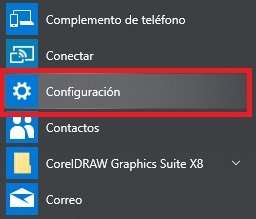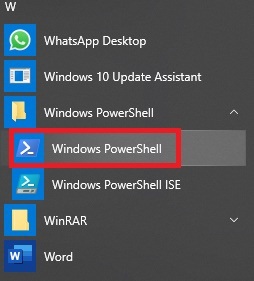
Sometimes we usually have problems with our computer hardware controllers and adapters, among the ones that stand out are inconveniences with network adapters, WAN mini-ports and certain graphic and sound controllers, since either inbound or outbound.
Be that as it may, the best way to examine all this is through the Windows device manager , but with all the recent updates and frequent changes you may find it difficult to find this functionality on your computer.
That is why today we bring you a complete step-by-step guide on how to open that administrator in your Windows 10 in many possible ways so that you can access without any complications.
>
What are we going to be able to find and what will we be able to find and what “Device Manager” of Windows 10?
In this we can find all the internal or external hardware complements of our computer. Here we can obtain information from each of them, we just have to display some of the categories present to see which devices are interacting with the computer.

When it comes to a compatibility problem with an adapter or controller, it will be through this means where we can identify and correct it, and if there is one that is not working properly or is stopped, over here can be restarted to enable its operation .
In addition, if any device is becoming obsolete, it will also be seen and updates can be obtained to optimize its operation. Just select one of these and we can see all the properties.
Steps to access the Windows 10 device manager
Next you’ll learn all the possible ways to open the device manager and apply the changes you want on your device.
Open with Start Menu
One of the easiest ways to access the device manager is through the start menu:
- To do this we must click on the lower left button of the screen to enter the menu .
![]()
- In the list of applications we will search and enter committedConfiguration†.

- We will locate in the first upper column, the option of clearlySistema†.

- Then on the next screen displayed, in the side menu at the bottom will be the option of “About”, in which we will press.
- In the new menu that will appear you will find the “Related configuration options” section where we will click on “System information”.

- This will open another section of the Windows system and in the left side menu, there will be the option of “Device Manager”.

The following way is much more effective than the first one, we just have to click with the right mouse button on the start button, located in the lower left corner. Once this is done, click on the “Device Manager”.

Using the Search bar
The easiest way to find something on our computer is without a doubt with the search engine, we just have to click on the magnifying glass in the lower left corner of the screen, right next to the Start button and type “Device Manager” and select it.

Access with Control Panel
To access the device manager of our Windows 10 computer, the native way to do it will always be with the “Control Panel”.
- To access we must enter the “Start” menu in the lower left corner, or by pressing the “Windows” on the keyboard.
- Once this is done we go almost to the end of the list of applications where “Windows System” says to find the “Control Panel.”

- Once opened, we will locate the “Hardware and Sound” section to enter it.

- This will take us directly to another screen, where above we will place among the options of “Devices and printers”, the option to enter “Device Manager”.

Thanks to the fact that this is the native method of access, it is logical that from there you have more access. The second way is a bit more practical.
With the panel open from your main screen , near the upper right corner, we will find a way to categorize how we see the options. Where it says “View by” we will click and change it from “Category” to “Big icons”.
This will display everything in different, much better visible icons, among which in the third column above will be the option of “Device Manager”.

Enter from the Equipment Manager
A very simple way to access it is from the “Team Management”, this option also allows us to see a much larger picture of all the changes to be made and from this we will be able to display much more information than with the other modes.
- We just have to click on the magnifying glass next to the start button, just down in the left corner of the screen and type in the “Computer Management” search engine and enter .

- Already in the side menu we can find many features and options, and among these, access to the “ Device Manager “.

Enter via Execute
A faster method can be using the keyboard shortcuts to enter, we just have to click on the Windows + R key and that’s it.
You can also access from the Windows search engine that opens with the magnifying glass button, or looking for it in the start menu at the end of the list of applications, among the options of “Windows system”.
After this, we will open a small window where we will have to write the following for devmgmt.msc ”, to finally accept and we will have the entry.

Access with the Command Console
The command console or better known as CMD can be easily opened from the start menu, almost at the end of the list of applications we will find the “Windows System” options. We can also press Windows + R to access when executing and write independentlyCMD†.
Once we have opened the well-known command console, we will write the following code distinguished devmgmt.msc ” to enable the ” System Administrator “section.

Using PowerShell
We can access the Windows PowerShell from the start menu, at the end of the list of all applications, or also from the search engine next to the start button.

You can even access by right clicking with the mouse on the start button, in the lower left corner of the screen and then clicking on “Windows PowerShell”. Once in this console we will write the following code “devmgmt.msc” to access it.
From the file explorer
This last method is one of the easiest, but in turn one of the least known by people. It is simply to access the file explorer of your computer on the main screen of this known as “This computer”, and right click with the mouse anywhere and select the option “Properties.”

We can see the basic information of our computer and right in the left side menu we will find the option of “Device Manager”.